Abstract
A genetic approach was used to assess the extent to which a particular plant defense response, phytoalexin biosynthesis, contributes to Arabidopsis thaliana resistance to Pseudomonas syringae pathogens. The A. thaliana phytoalexin, camalexin, accumulated in response to infection by various P. syringae strains. No correlation between pathogen avirulence and camalexin accumulation was observed. A biochemical screen was used to isolate three mutants of A. thaliana ecotype Columbia that were phytoalexin deficient (pad mutants). The mutations pad1, pad2, and pad3 were found to be recessive alleles of three different genes. pad1 and pad2 were mapped to chromosome IV and pad3 was mapped to chromosome III. Infection of pad mutant plants with strains carrying cloned avirulence genes revealed that the pad mutations did not affect the plants' ability to restrict the growth of these strains. This result strongly suggests that in A. thaliana, phytoalexin biosynthesis is not required for resistance to avirulent P. syringae pathogens. Two of the pad mutants displayed enhanced sensitivity to isogenic virulent P. syringae pathogens, suggesting that camalexin may serve to limit the growth of virulent bacteria.
Full text
PDF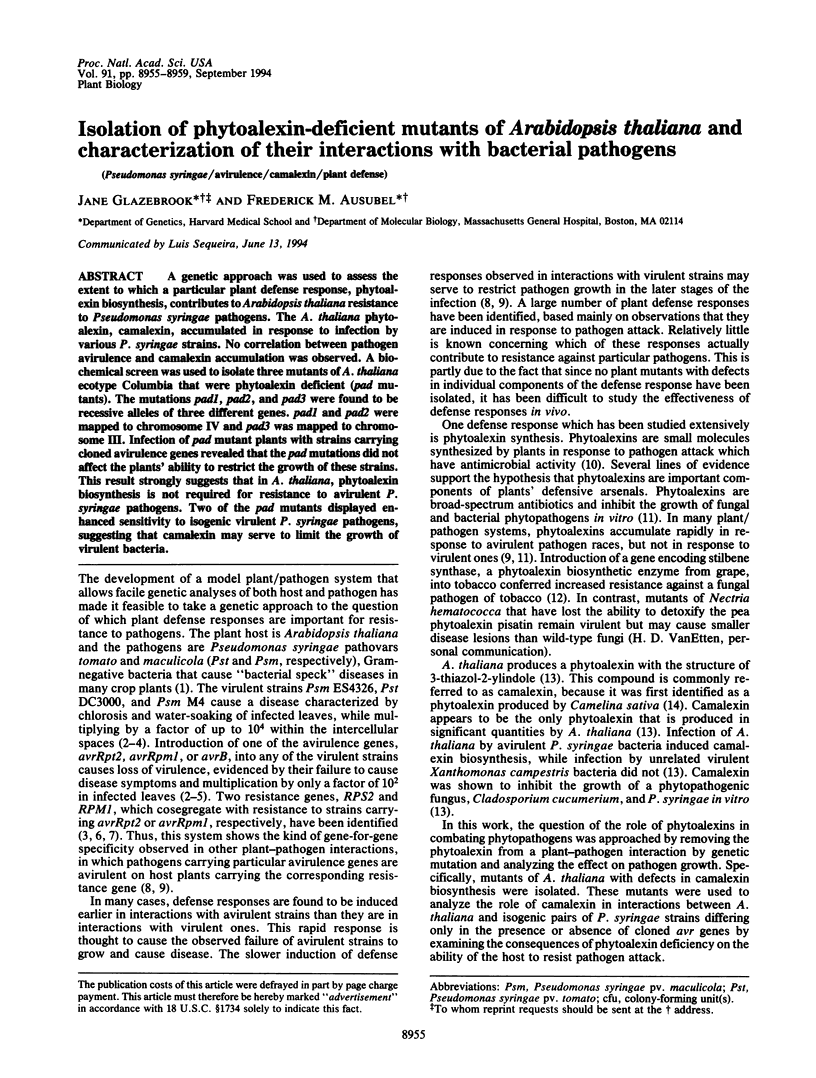
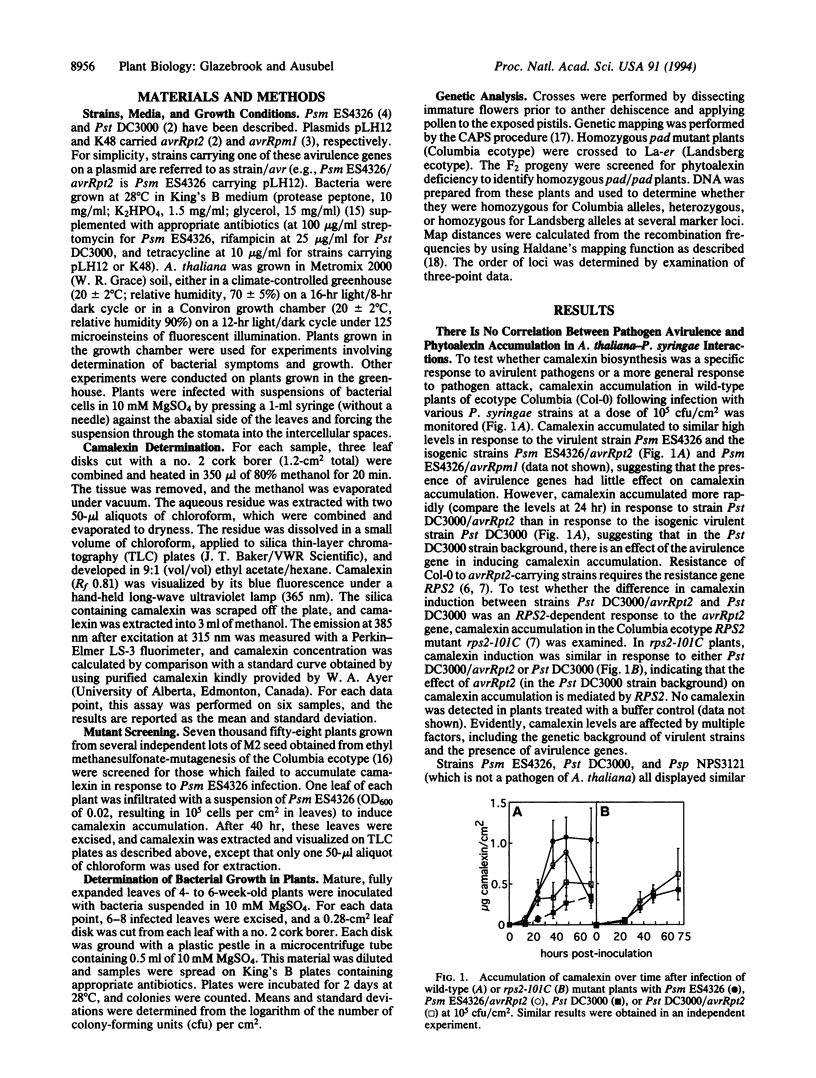
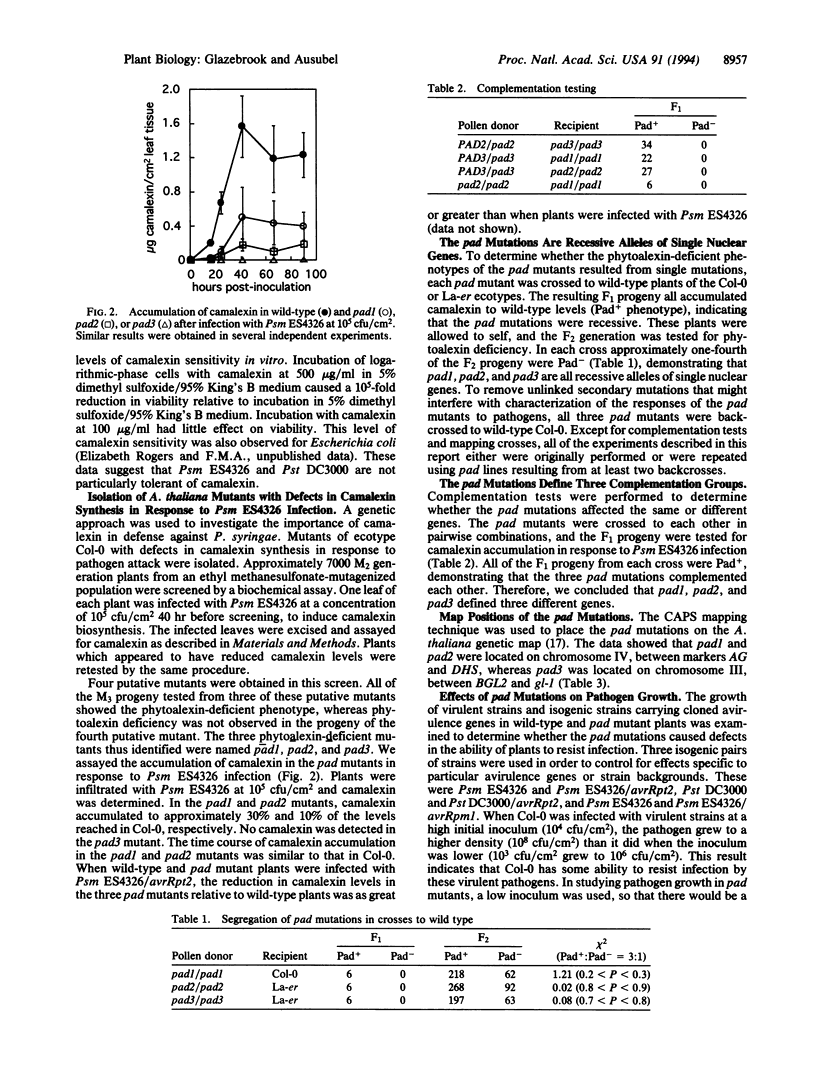
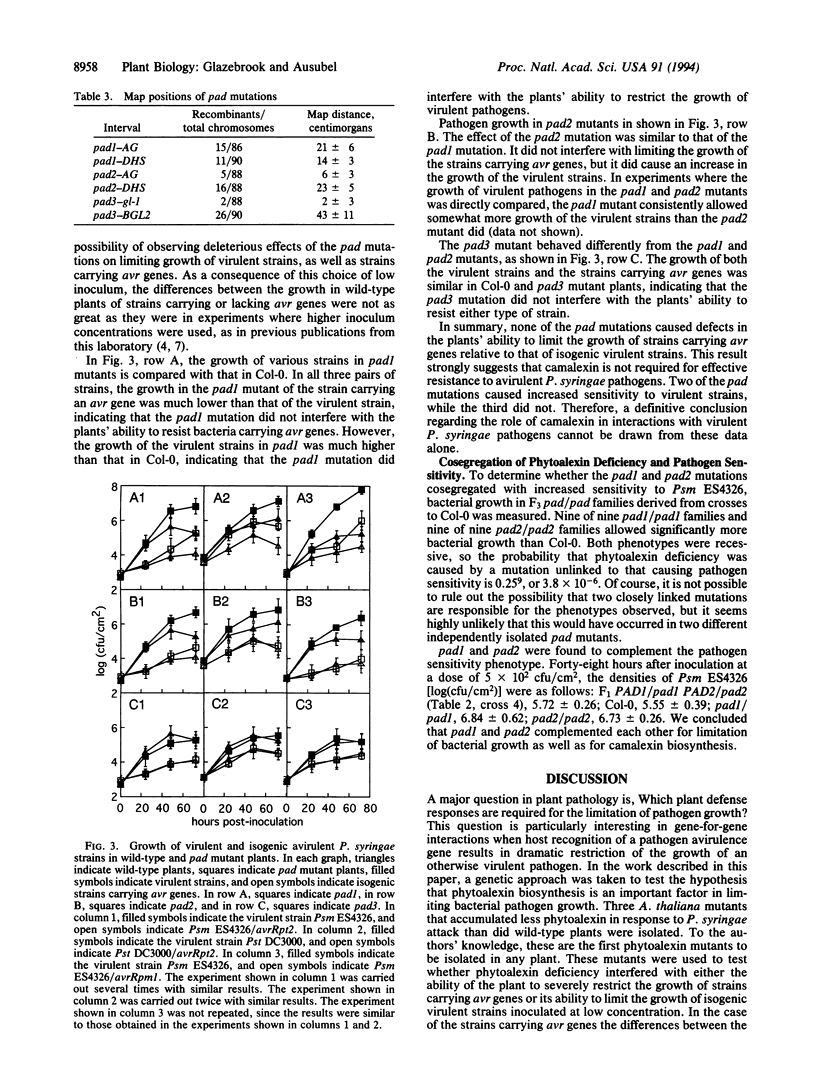
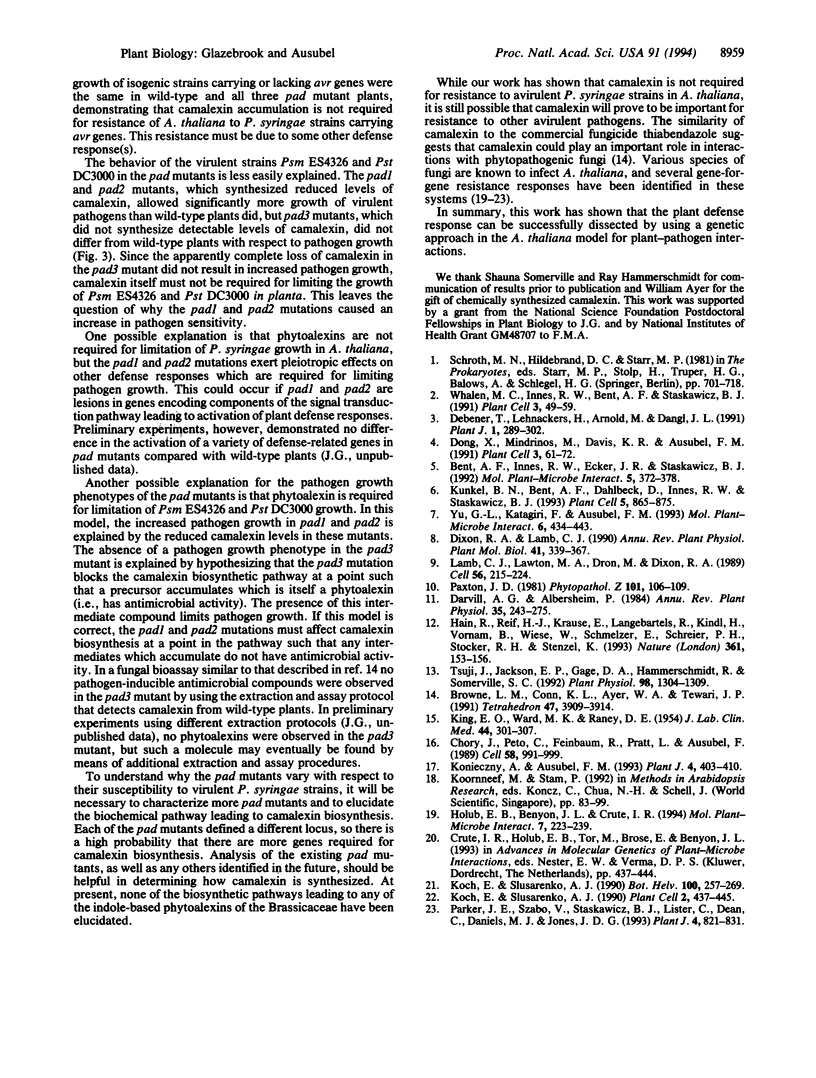
Selected References
These references are in PubMed. This may not be the complete list of references from this article.
- Bent A. F., Innes R. W., Ecker J. R., Staskawicz B. J. Disease development in ethylene-insensitive Arabidopsis thaliana infected with virulent and avirulent Pseudomonas and Xanthomonas pathogens. Mol Plant Microbe Interact. 1992 Sep-Oct;5(5):372–378. doi: 10.1094/mpmi-5-372. [DOI] [PubMed] [Google Scholar]
- Chory J., Peto C., Feinbaum R., Pratt L., Ausubel F. Arabidopsis thaliana mutant that develops as a light-grown plant in the absence of light. Cell. 1989 Sep 8;58(5):991–999. doi: 10.1016/0092-8674(89)90950-1. [DOI] [PubMed] [Google Scholar]
- Dong X., Mindrinos M., Davis K. R., Ausubel F. M. Induction of Arabidopsis defense genes by virulent and avirulent Pseudomonas syringae strains and by a cloned avirulence gene. Plant Cell. 1991 Jan;3(1):61–72. doi: 10.1105/tpc.3.1.61. [DOI] [PMC free article] [PubMed] [Google Scholar]
- Hain R., Reif H. J., Krause E., Langebartels R., Kindl H., Vornam B., Wiese W., Schmelzer E., Schreier P. H., Stöcker R. H. Disease resistance results from foreign phytoalexin expression in a novel plant. Nature. 1993 Jan 14;361(6408):153–156. doi: 10.1038/361153a0. [DOI] [PubMed] [Google Scholar]
- KING E. O., WARD M. K., RANEY D. E. Two simple media for the demonstration of pyocyanin and fluorescin. J Lab Clin Med. 1954 Aug;44(2):301–307. [PubMed] [Google Scholar]
- Koch E., Slusarenko A. Arabidopsis is susceptible to infection by a downy mildew fungus. Plant Cell. 1990 May;2(5):437–445. doi: 10.1105/tpc.2.5.437. [DOI] [PMC free article] [PubMed] [Google Scholar]
- Konieczny A., Ausubel F. M. A procedure for mapping Arabidopsis mutations using co-dominant ecotype-specific PCR-based markers. Plant J. 1993 Aug;4(2):403–410. doi: 10.1046/j.1365-313x.1993.04020403.x. [DOI] [PubMed] [Google Scholar]
- Kunkel B. N., Bent A. F., Dahlbeck D., Innes R. W., Staskawicz B. J. RPS2, an Arabidopsis disease resistance locus specifying recognition of Pseudomonas syringae strains expressing the avirulence gene avrRpt2. Plant Cell. 1993 Aug;5(8):865–875. doi: 10.1105/tpc.5.8.865. [DOI] [PMC free article] [PubMed] [Google Scholar]
- Lamb C. J., Lawton M. A., Dron M., Dixon R. A. Signals and transduction mechanisms for activation of plant defenses against microbial attack. Cell. 1989 Jan 27;56(2):215–224. doi: 10.1016/0092-8674(89)90894-5. [DOI] [PubMed] [Google Scholar]
- Tsuji J., Jackson E. P., Gage D. A., Hammerschmidt R., Somerville S. C. Phytoalexin Accumulation in Arabidopsis thaliana during the Hypersensitive Reaction to Pseudomonas syringae pv syringae. Plant Physiol. 1992 Apr;98(4):1304–1309. doi: 10.1104/pp.98.4.1304. [DOI] [PMC free article] [PubMed] [Google Scholar]
- Whalen M. C., Innes R. W., Bent A. F., Staskawicz B. J. Identification of Pseudomonas syringae pathogens of Arabidopsis and a bacterial locus determining avirulence on both Arabidopsis and soybean. Plant Cell. 1991 Jan;3(1):49–59. doi: 10.1105/tpc.3.1.49. [DOI] [PMC free article] [PubMed] [Google Scholar]
- Yu G. L., Katagiri F., Ausubel F. M. Arabidopsis mutations at the RPS2 locus result in loss of resistance to Pseudomonas syringae strains expressing the avirulence gene avrRpt2. Mol Plant Microbe Interact. 1993 Jul-Aug;6(4):434–443. doi: 10.1094/mpmi-6-434. [DOI] [PubMed] [Google Scholar]


